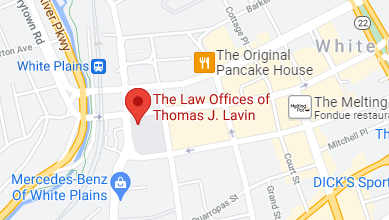If you are injured by another driver’s negligence in or near New York City, a good auto accident attorney can investigate the collision, scrutinize the medical and police reports, interview any eyewitnesses, and tell you if you have grounds for a personal injury lawsuit.
If you do, you will probably want to know what your case is worth. While your Bronx personal injury attorney may be able to give you a ballpark estimate based on your documentable economic losses – your medical expenses and your days missed from work – determining the value of your non-economic damages (that is, your pain and suffering) is somewhat more difficult.
Damages are not always available in New York courts for all types of pain and suffering that might be endured after a traffic injury, but damages for any past, present, or future physical pain arising from the traffic injury can usually be awarded.
Psychological and emotional damages, however, can be much more difficult to prove. Juries in personal injury trials in this state have the discretion to apply their own common sense and reason when it comes to determining non-economic damages.
Since personal injury juries in New York typically receive only minimal directions from a judge, damage awards in this state vary substantially.
When determining an award for pain and suffering, jurors may consider the age of the victim, the type of injury, and the victim’s prospects for pain and injury in the future.
New York is one of the few states that does not limit or “cap” pain and suffering awards, so theoretically there is no limit on the amount of such awards. That does not, however, mean that pain and suffering awards are easy to obtain.
HOW ARE PAIN AND SUFFERING DAMAGES DETERMINED?
“Pain and suffering” is a legal term for injuries that include not only physical pain but also emotional and mental damages such as distress, grief, and “the loss of the enjoyment of life.”
Fears and anxieties – even post-traumatic stress disorder (PTSD) – are also injuries, and a physically injured victim may be able to recover damages for these injuries as well.
An insurance company, however, may offer you very little – if anything – for your pain and suffering after a traffic crash. How does an insurance company calculate pain and suffering damages after a traffic accident? There are no laws, strict rules, or even guidelines for determining pain and suffering damages.
Many insurance companies today use computer programs that tell them what amount should be offered for pain and suffering.
These computer programs consider the accident victim’s age, the type of injury or injuries, and also the type of treatment that the victim sought. Why is the “type” of treatment a consideration?
An insurance company will typically presume that treatment by an M.D. represents a more serious injury than treatment from a chiropractor, for example, or from an acupuncturist. Insurance companies also consider the duration of the treatment.
If the insurance company believes that a victim’s treatment was excessive or unnecessary, the company will not include that part of the treatment in its own pain and suffering calculations.
Personal injury attorneys use different methods – primarily two different methods – to arrive at what they believe is a just amount for pain and suffering damages.
The first method is simply multiplying the victim’s economic damages (medical costs and lost income) by a number between one and five, hinging on the severity of the injury.
For example, if a victim’s broken leg costs $3000 in medical expenses, an attorney might rank the injury as “a three” and thus insist that $9,000 is a just amount for a pain and suffering award.
Other attorneys favor the per diem (Latin meaning “per day”) method of calculation. This method assigns a particular amount to each day from the date of the injury to the date of the patient’s “maximum” recovery (the date when the patient has healed as much as possible and will see no further improvement).
Insurance companies are not required or even expected to consider either of these methods for calculating pain and suffering damages.
HOW CAN YOU PROVE PAIN AND SUFFERING?
The proof of an accident victim’s pain and suffering can take a variety of forms. The more evidence that an injury victim can offer of pain and suffering, the more likely it is that the injury victim will receive a fair and just pain and suffering award.
Obviously, any medical records, medical reports, and statements or testimony from your doctor will provide important evidence toward proving your pain and suffering claim.
Medical documentation, however, should be bolstered with photographs, personal journals or diaries, and the testimony or statements of family members and friends regarding your physical and emotional pain and suffering.
Treatment provided by a mental health professional – and that professional’s statement or testimony – will be required in the state of New York if a plaintiff is seeking damages for a psychological or mental condition such as depression, anxiety, or insomnia.
WHAT IS A FAIR AMOUNT FOR PAIN AND SUFFERING?
After an injury in a traffic crash, if the insurance company offers a settlement, and the offer includes pain and suffering compensation, how can you know if the offer is fair and just?
You can use the multiplication method or the per diem method to arrive at a figure, and if the insurance company’s offer comes close to one of those figures, it is probably a good offer.
Still, in the New York City area, you will want to consult with a skilled personal injury attorney before you accept any settlement offer from an insurance company.
Under a no-fault auto insurance system like New York’s, it is more difficult for accident victims to win pain and suffering awards.
Medical expenses are paid for traffic accident injury victims regardless of fault, so pain and suffering claims are harder to establish in this state.
An experienced Bronx personal injury attorney can provide you with legal guidance and assist you with filing a claim. If you’ve suffered a personal injury in a traffic crash in the New York City area, you may be entitled to compensation for pain and suffering.
Most personal injury attorneys work on a contingent basis, so you will pay no attorney fees until and unless your claim prevails.










